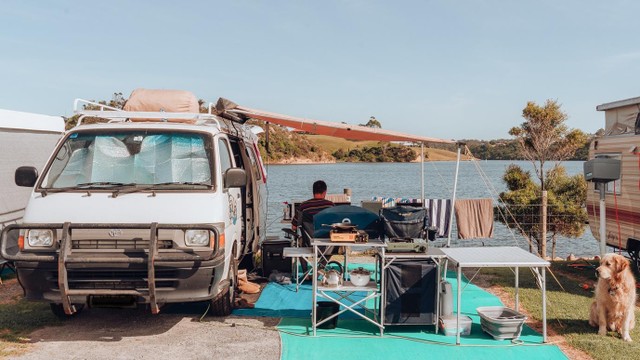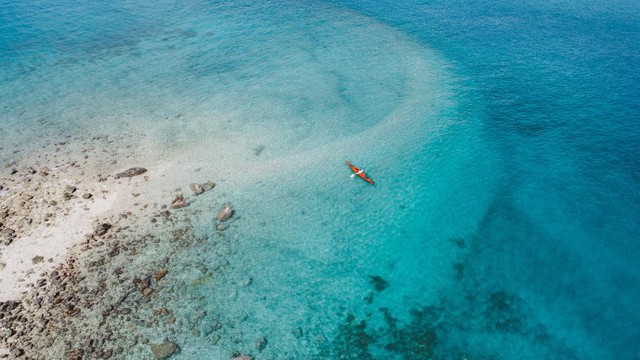Editors’ Note: We asked Sally Rodrick, the voice of sustainable travel blog Sally Sees, to give us her insider tips on how to explore Australia without negatively impacting its fragile ecosystem. Below is her guide, from the best eco-friendly lodging to ethical wildlife experiences. All images are hers.
Australia. The Land Down Under, Great Southern Land, Sunburnt Country. However you refer to it, Australia attracts visitors from all over the world with its pristine natural landscapes, unique wildlife and rich living culture. But when visiting, it’s important for travelers to ensure they are treading lightly and not causing harm to the places they visit. The good news is that sustainable tourism in Australia is taken very seriously, and there is no shortage of experiences available for conscious travelers. Below, we’ll look at accommodations, activities, and tips to explore Australia more sustainably.
Best Eco-Friendly Accommodation in Australia
Whether you’re looking for a tropical getaway or a mountain hideaway, there is a sustainable accommodation option for you in Australia.
If it’s an island you’re after, Wilson Island is a tiny coral cay in the Southern Great Barrier Reef. The entire island is 100% solar powered, with just nine glamping tents. The island closes between February and April each year to allow the local birds the chance to nest undisturbed, highlighting the resort’s commitment to the local environment and wildlife. Nestled in the New South Wales World Heritage-listed Blue Mountains is Emirates One&Only Wolgan Valley. This is eco-luxury at its finest, as the entire property is completely carbon neutral. Built on a 1,600-hectare conservation reserve, it gives guests the opportunity to experience the unique flora and fauna of the area.
For an outback experience, Arkaroola Wilderness Sanctuary in South Australia’s Flinders Ranges offers accommodation for all budgets. Explore the unique geology of the sanctuary with knowledgeable guides, 4WD tours, astronomy experiences and bushwalks. If you’re travelling on a budget, there’s not too many accommodation options more sustainable than camping! Camping and caravanning is extremely popular in Australia, and there are thousands of both free and paid campsites all over the country. Get back to basics, use nature’s resources and leave sites as you found them for the ultimate eco-accommodation. Wikicamps Australia is a great place to find a spot to pitch your tent.
Indigenous Tourism Experiences
The Aboriginal and Torres Strait Islander people are the traditional custodians of the Australian lands. One of the oldest living cultures in the world, these groups have lived in harmony with the land for thousands of years. They have a strong connection to the country and rich history of stories, knowledge and traditions to share with visitors.
No matter where you are in Australia, you can usually find an Indigenous experience. Hunt for bush tucker and learn about the medicinal uses of native plants in the Northern Territory’s Red Centre with Karkke. Explore the breathtaking Kimberley region in Western Australia with its traditional owners on a tour with Kingfisher Tours. Where you will discover rock art and visit a remote Aboriginal community. Or experience the Great Barrier Reef with Dreamtime Dive & Snorkel. Accompanied by local Indigenous guides, you will hear Dreamtime stories and learn more about this renowned marine ecosystem.
Tourism Australia is a great resource to find Aboriginal experiences throughout the country.
Ethical Australian Wildlife Experiences
Australia is home to a variety of weird and wonderful creatures found nowhere else in the world. Australia’s native animals entice tourists from around the world, and are a memorable part of an Aussie adventure. And the best way to see this wildlife is in the wild! There are opportunities all over Australia to spot animals in the wild. Whilst it’s never possible to guarantee a sighting, here are a few places where your chances are pretty high!
If it’s kangaroos you’re seeking, you can spot them on the beach at the Cape Hillsborough National Park in Queensland or at Lucky Bay in the Cape Le Grand National Park in Western Australia. You can also see the namesake marsupials on Kangaroo Island in South Australia. There is a high chance of encountering koalas, echidnas, sea lions and dolphins too at this well-known wildlife destination. Maria Island in Tasmania is considered one of the best places in Australia to see wombats in the wild. And the Great Ocean Road in Victoria is known for its population of koalas, and even the elusive platypus in the Great Otway National Park.
The Ningaloo Reef off the coast of Western Australia is often forgotten about in favour of its eastern neighbour, the Great Barrier Reef. But Ningaloo is the world’s largest fringing reef and is a fantastic place to see marine life. Each year it plays host to the world’s largest aggregation of whale sharks. On the east coast in Queensland during the cooler months (July – October), Hervey Bay is the best chance to see migrating humpback whales. The area has been declared a Whale Heritage site, and welcomes thousands of whales on their annual journey to and from Antarctica to breed and give birth.
Finding Sustainable Tourism Experiences
Ecotourism Australia is the country’s leading certification body, assessing a range of tourism products, and even whole destinations, against a set of strict sustainability standards. Their Green Travel Guide is a great place to find tours, attractions and accommodation options that are certified. You can be confident booking these tourism products, knowing they protect the environment, enhance the livelihoods of local communities and reduce emissions and waste.
If you want more than just a sustainable tour, the Port Douglas Daintree region in North Queensland is certified as a sustainable destination. Currently the only eco-certified destination in the country, with a commitment to sustainable practices at the core of its tourism industry. Many other destinations throughout Queensland and New South Wales are in the process of being certified too. Check on the progress of the applicant destinations here.
Tips for Sustainable Tourism in Australia
Anyone can participate in sustainable tourism in Australia, no matter your travel style or budget. Be aware of the potential impacts you can have on the destinations you visit, and take steps to mitigate them. Here are ten tips to remember for your visit to Australia, to help you be a more sustainable tourist.
- Make the effort to learn about and understand Australia’s Indigenous culture and heritage
- Shop, eat and stay local wherever possible to support the communities you visit
- Say no to single use plastics and pack reusable bags, water bottles, coffee cups and cutlery
- Opt to see wildlife in the wild, not in captive settings
- Leave natural areas as you found them, taking all rubbish away with you
- Choose eco-certified accommodation and tour operators where possible
- Be respectful of animals, people and the environment
- Participate in environmental or social events, such as beach clean ups, if you have the time
- Use a reef-safe sunscreen when swimming in Australia’s beaches
- Read and obey all information found in national parks and protected areas across Australia
Author Bio
Sally is the face behind the sustainable budget travel blog, Sally Sees. Sally believes that travel doesn’t need to cost the earth. Both in how much we spend exploring it, and the impact our travels have on it. Find her at sallysees.comand on Instagram @sallysees. She is also featured in our list of 32 Bloggers Leading the Way Toward More Mindful Travel.



